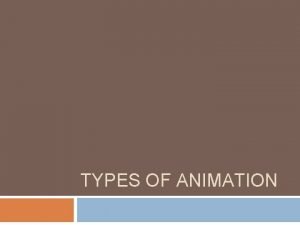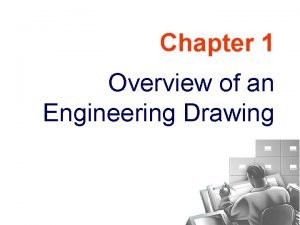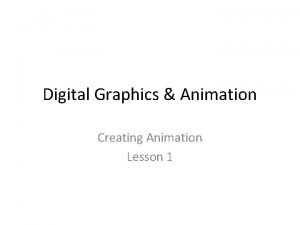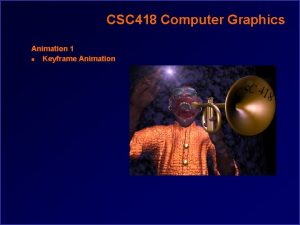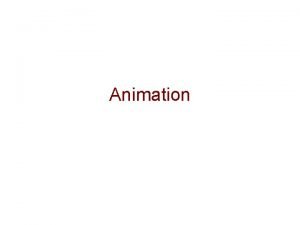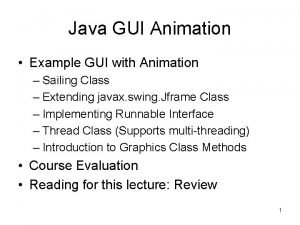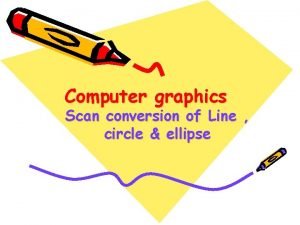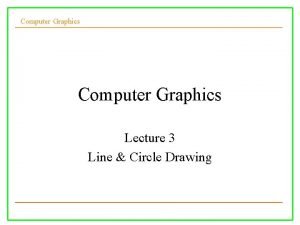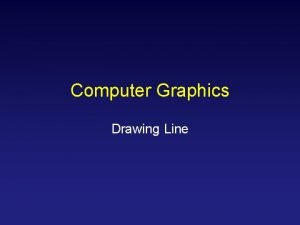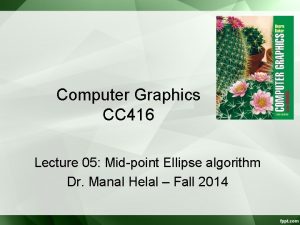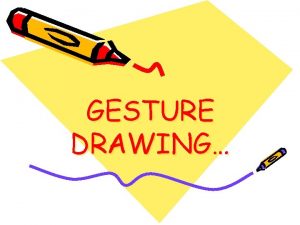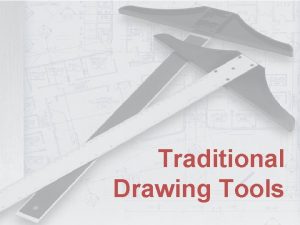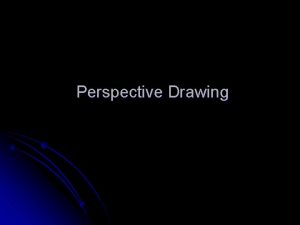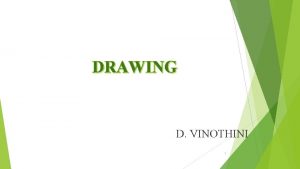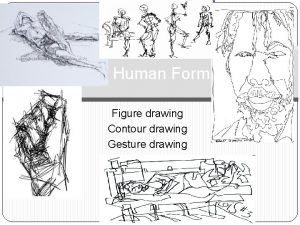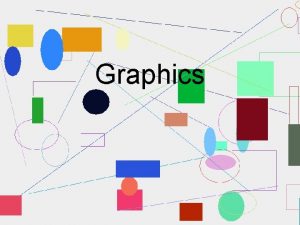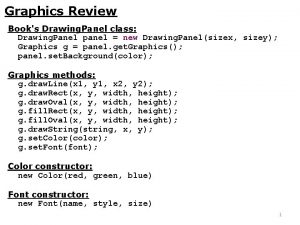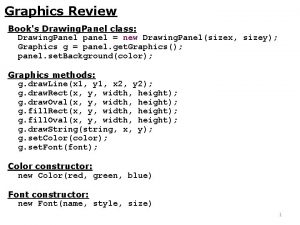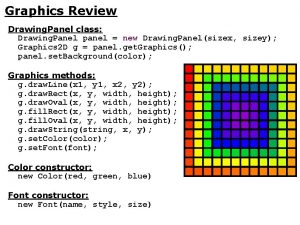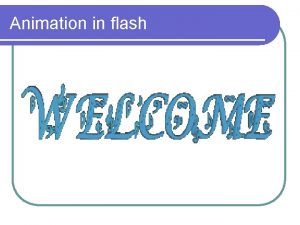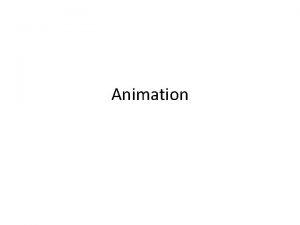Lecture 3 Animation Graphics Topics Animation Graphics Drawing






















- Slides: 22

Lecture 3: Animation & Graphics Topics: Animation, Graphics, Drawing Date: Jan 31, 2016

References (study these) • http: //developer. android. com/guide/topics/graphics/overview. html • http: //developer. android. com/guide/topics/graphics/prop-animation. html • http: //developer. android. com/guide/topics/graphics/view-animation. html • http: //developer. android. com/guide/topics/graphics/drawable-animation. html • http: //developer. android. com/guide/topics/graphics/2 d-graphics. html

High Five! https: //youtu. be/u. Fpo. Xq 73 HHY

Animation Overview 1. Property Animation 2. View Animation 3. Drawable Animation

1. Property Animation (Value) • Changing value of a variable over a period: Value. Animator anim = Value. Animator. of. Float(0 f, 40 f); anim. set. Duration(40); anim. start(); • Use set. Interpolator() to change behavior. Limitation?

1. Property Animation (Object) • Changing a property of an object. Hello World Object. Animator anim = Object. Animator. of. Float(my. Text. View, “text. Size”, 10 f, 30 f); anim. set. Duration(5000); anim. start(); Object Variable

2. View Animation • You can animate a View e. g. , by scaling, rotating, translating an Image. View.

2. View Animation • Define the Animation in XML: res/anim <? xml version="1. 0" encoding="utf-8"? > <rotate xmlns: android="http: //schemas. android. com/apk/res/android" android: from. Degrees="0" android: to. Degrees="360" android: to. YScale="0. 0" android: pivot. X="50%" android: pivot. Y="50%" android: start. Offset=“ 1000" android: duration="10000" /> • Use Animation to fetch it, then apply it to a View. Animation x = Animation. Utils. load. Animation( get. Application. Context(), R. anim. abovexmlfile ); some. View. start. Animation(x);

3. Drawable Animation • We can load and display a series of Drawable resources (e. g. images) one after another.

3. Drawable Animation • Define animation-list in XML: res/drawable <? xml version="1. 0" encoding="utf-8"? > <animation-list xmlns: android="http: //schemas. android. com/apk/res/android" android: oneshot=“false"> <item android: drawable="@drawable/pic 1" android: duration=“ 1000" /> <item android: drawable="@drawable/pic 2" android: duration=“ 1000" /> </animation-list> • Use Animation. Drawable inside your code some. Img. View. set. Background. Resource(R. drawable. abovexml); ((Animation. Drawable)some. Img. View. get. Background()). start();

Code Practice: • Get a few images and copy: res/drawable/ • Create an XML file: res/drawable/my_anim_list • Add an Image. View and set Background • Use Animation. Drawable to start animation

Graphics Overview • Canvas and Drawables • Hardware Acceleration (think GPU) • Open. GL (framework API and NDK) draw. Rect() draw. Circle() … Bitmap Canvas

2 D Drawing 1. Drawable: • Put Drawables (into a View) • Less work, less control, less efficiency 2. Canvas: • Draw on the Canvas (of a View) • More work, more control, more efficiency

1. Using Drawables • Putting Drawables into a View Four Button. Views res/drawable/Queen. png res/drawable/tfade. xml

1. Using Drawables • android. graphics. drawable • Bitmap. Drawable, Transition Drawable, Animation Drawable, Shape. Drawable, etc. • Two ways to add Drawables: a) Image from Project Resource b) XML file defining Drawable properties

1(a) Image from Project Resource • Copy images into res/drawable/ • Use it inside the layout xml <Image. View android: layout_width="match_parent" android: layout_height="wrap_content" android: id="@+id/img 1" android: src="@drawable/my_image"/> • You can also do the same by writing code: Image. View i = new Image. View(this); i. set. Image. Resource(R. drawable. my_image); Linear. Layout ll = new Linear. Layout(this); ll. add. View(i); set. Content. View(ll); //instead of set. Content. View(R. layout. somexmllayoutfile)

1(b) XML with drawable properties • e. g. Transition Drawable: res/drawable/something. xml <transition xmlns: android="http: //schemas. android. com/apk/res/android"> <item android: drawable="@drawable/image 1"> <item android: drawable="@drawable/image 2"> </transition> • Now, take an Image. View to show it (them): Transition. Drawable td; td = (Transition. Drawable) get. Resources(). get. Drawable(R. drawable. something); td. set. Cross. Fade. Enabled(true); Image. View img; img = (Image. View) find. View. By. Id(R. id. img 1); img. set. Image. Drawable(td); td. start. Transition(5000);

Nine Patch Image • Regular. png images + defining stretchable regions From a terminal: Run the draw 9 patch command from your SDK sdk/tools directory to launch the tool.

2. Using Canvas • Canvas holds all of your draw*() calls. • Drawing is performed upon an underlying Bitmap b = Bitmap. create. Bitmap(100, Bitmap. Config. ARGB_8888); Canvas c = new Canvas(b); Paint p = new Paint(); p. set. Color(Color. GREEN); c. draw. Rect(10, 90, p); • Two ways to use the Canvas of a View: • Custom View • Surface View

2(a) Canvas of a Custom View • Good for low frame-rate applications (e. g. chess or snake game). • You define a new View and add it in the layout XML file (like you do for a Text. View, Image. View etc. ) • Android provides you the Canvas as you extend a View and override its on. Draw() method. • To request a redraw, use: invalidate(). Outside main Activity’s thread, use post. Invalidate().

2(a) Canvas of a Custom View • Create your own View Class (Custom. View. java) public class Custom. View extends View { //Declare all four types of constructors here. @Override protected void on. Draw(Canvas canvas) { super. on. Draw(canvas); //Use canvas. draw*() } } • Use the View in the layout xml <edu. unc. nirjon. projectname. Custom. View android: id="@+id/mycustomview" android: layout_width="match_parent" android: layout_height="match_parent" /> • To force a redraw: invalidate()

Code Practice: • Create 2 Buttons: Up and Down • Create a Custom View • Draw a circle at location (X, Y) • Every time the buttons are clicked, the point will move. (Hint: use invalidate() to force redraw).
 01:640:244 lecture notes - lecture 15: plat, idah, farad
01:640:244 lecture notes - lecture 15: plat, idah, farad Traditional animation vs computer animation
Traditional animation vs computer animation مقدمة عن الرسم الفني
مقدمة عن الرسم الفني Engineering drawing topics
Engineering drawing topics Digital graphics and animation
Digital graphics and animation Keyframe animation in computer graphics
Keyframe animation in computer graphics Animation refers to
Animation refers to Java animation example
Java animation example Drawing lecture
Drawing lecture Drawing lecture
Drawing lecture Engineering drawing fillet
Engineering drawing fillet Gambar kunci animasi
Gambar kunci animasi Hand held computer
Hand held computer Introduction to computer graphics - ppt
Introduction to computer graphics - ppt What is line in computer graphics
What is line in computer graphics Drawing vector graphics laboratory
Drawing vector graphics laboratory Ellipse drawing algorithm in computer graphics ppt
Ellipse drawing algorithm in computer graphics ppt Direct use of line equation in computer graphics
Direct use of line equation in computer graphics Dda circle drawing algorithm can be used to draw
Dda circle drawing algorithm can be used to draw How to draw a line in computer graphics
How to draw a line in computer graphics This is the midpoint inside the ellipse
This is the midpoint inside the ellipse Circle and ellipse drawing algorithm in computer graphics
Circle and ellipse drawing algorithm in computer graphics How to draw isomtric freehnad
How to draw isomtric freehnad

